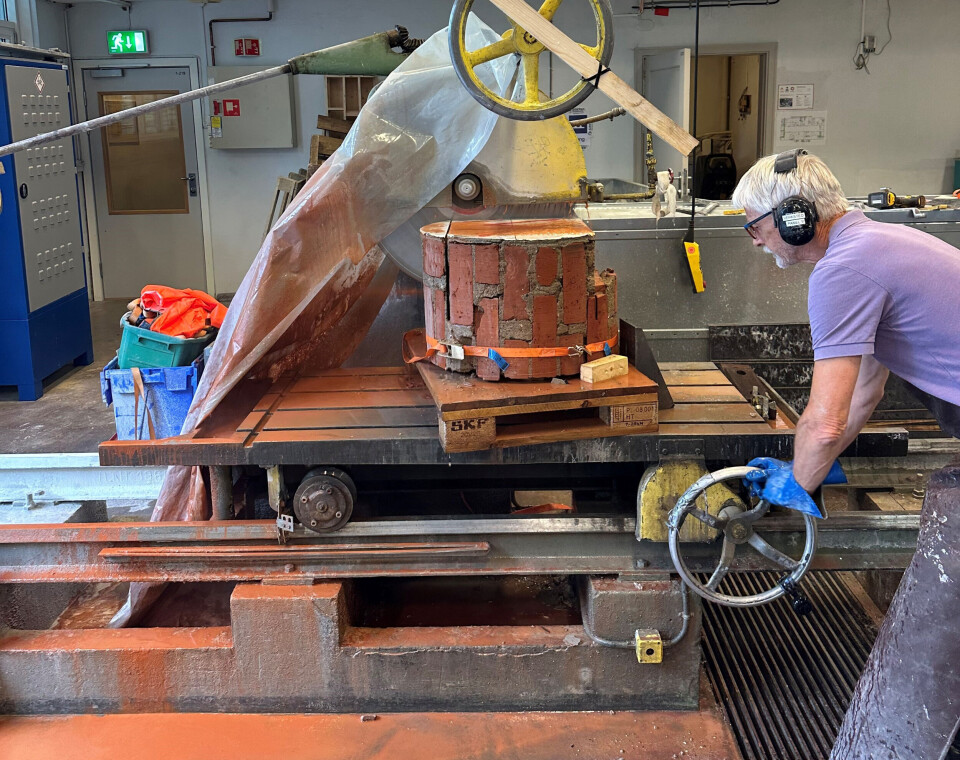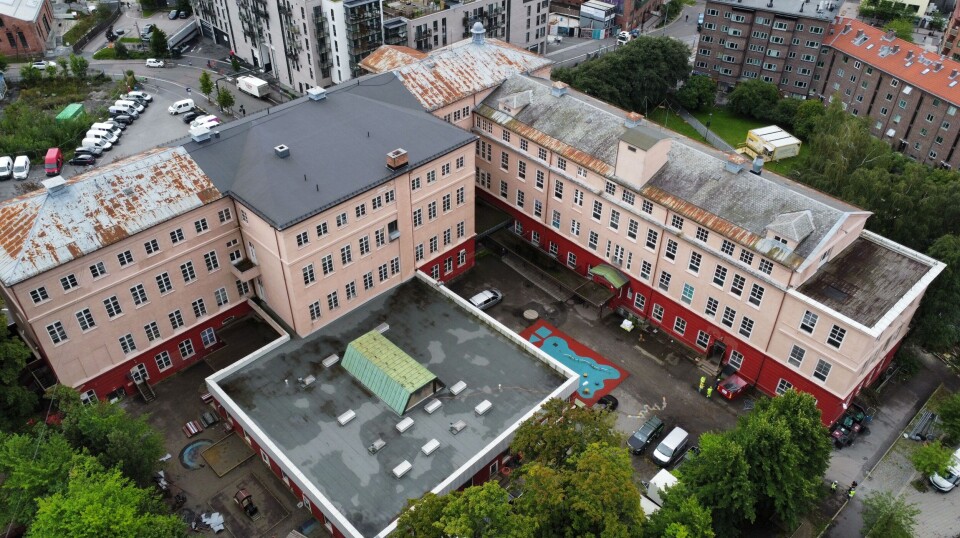THIS CONTENT IS BROUGHT TO YOU BY SINTEF - read more

Old brickwork can be brought back to life in old heritage buildings
Researchers are examining and preserving old brickwork as part of the restoration of the heritage building Sophies Minde in Oslo, Norway.
The reuse and recycling of materials is important for reducing waste and greenhouse gas emissions generated by the building sector.
The developer Oslobygg has ambitious plans for renovation of the Sophies Minde building, which is part of Oslo University Hospital, and is getting plenty of support from researchers at SINTEF.
Everything from granite paving stones to baby changing tables and catering kitchen equipment will be reused in the new building. Construction supports from the old industrial building will also be given a new life, both in existing and new sections of the building. If possible, some of them will be reinforced with recycled steel.
Beams from the old vault arches have been recertified for use in reinforcement structures, and about 8,000 bricks from supporting and non-supporting brickwork walls have already been dismantled and prepared for reuse in the new building.
The contractors Vedal Entreprenør have already started to incorporate many of the doors taken from the old building, once they have been prepared for reuse.

How much can old brickwork support?
“The client wanted our help in assessing the remaining carrying capacity of the older supporting brickwork. They probably envisaged compressive strength testing of the bricks, and perhaps the mortar,” says Fredrik Slapø, a research scientist at SINTEF.
Previous projects have taught researchers at SINTEF that the compressive strength of individual bricks has little effect on that of the brickwork itself.
“We know, based on our own experiments and the literature, that the adhesion between the bricks and mortar is crucial to the compressive strength of the brickwork,” says Slapø.

For this reason, the client was advised against basing his decisions on separate testing of the bricks and mortar.
“As part of this project, it was important to identify the load-bearing capacity inherent in the construction so that we can limit the demand for steel reinforcement,” he explains.
Oslobygg has plans to renovate even more buildings in Norway’s capital in the years ahead.
“Every lesson we learn from this project will be valuable. By testing and obtaining verification of the strength of existing materials, we can reduce the use of steel reinforcement in the renovated building,” project manager Mathias Kolsaker says.
Computing a safe limit
Following a comprehensive test programme, for which test pieces were cut from sections weighing several hundred kilos, the researchers were able to recommend a safe limiting value.
“We’ve worked in the past on similar projects at a smaller scale, but this still feels like pioneering research. The work is demanding because the test pieces are large and also fragile, and do must be handled with great care,” Slapø says.
Testing has been carried out at SINTEF’s concrete testing laboratories, which offer the qualified personnel and equipment needed to carry out a broad range of standard concrete tests.
———
Read the Norwegian version of this article on forskning.no
More content from SINTEF:
-
How Svalbard is becoming a living lab for marine restoration
-
New study: Even brand-new apartments in cities can have poor indoor air quality
-
Fresh hope for patients with chronic inflammatory bowel disease
-
Testing a giant ship: May take five kilometres to stop
-
A robot is helping researchers hunt for the best cancer warriors
-
Locomotives that run on diesel can be electrified





































